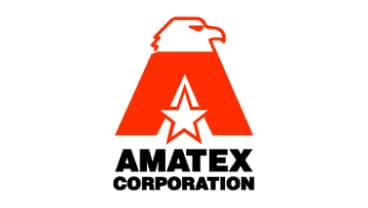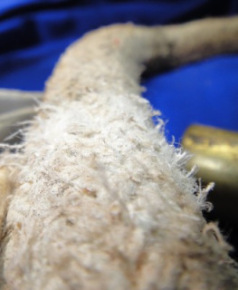Amatex Corporation
Amatex Corporation is a Pennsylvania-based textile manufacturer that began in the 1950s as the American Asbestos Textile Corp. Like so many other textile manufacturers that focused on producing fireproof products before the 1980s, Amatex used asbestos extensively.

Amatex and Asbestos Manufacturing

In 1950, Amatex began manufacturing asbestos cloth, yarn, lap, thread and cord. By the early 1960s, the company expanded its product line and began manufacturing asbestos wick, rope and tubing.
Amatex purchased an asbestos plant in Meredith, New Hampshire, from the Keasbey & Mattison Company in 1962. It continued manufacturing asbestos products there through 1982.
Asbestos materials were used because they added strength and heat resistance to textiles. They were also affordable and easily incorporated into different types of textile products.
The company stopped using asbestos in the early 1980s, but knew long before then that it was hazardous. As a result, Amatex was one of many asbestos-manufacturing companies in the 20th century that faced asbestos litigation.
It was among the first asbestos manufacturers to file for bankruptcy protection and establish a trust fund to handle future asbestos claims.
Amatex emerged from bankruptcy protection in 1990 and continues its operations today in Pennsylvania, New Hampshire and Mexico. While the company still manufactures and distributes heat-resistant materials, its products have been asbestos-free since the early 1980s. Instead of asbestos, Amatex uses fiberglass and silica fibers in its textiles.
In December 2020, Davlyn Group, a technical textile company, acquired Amatex and Norfab into its family of manufacturers. The company now creates technical textile yarns, broad woven fabrics and woven narrow products.
Development of the Amatex Asbestos Trust
By 1982, Amatex faced more than 9,000 claims from former employees and users of their products. Legal liabilities forced Amatex to file for Chapter 11 bankruptcy protection on Nov. 1, 1982, and the court ordered it to create a Creditors’ Committee of Asbestos Litigants to handle previously filed asbestos claims.
Amatex’s bankruptcy plan established a trust fund known by various names, including the Amatex Asbestos Disease Trust Fund, Amatex Settlement Trust and Amatex Asbestos Trust.
The trust fund was established in 1990 with $16 million to handle future asbestos claims. During its first 10 years, the fund paid more than $11 million to asbestos claimants.
Garden City Group handled the trust until June 2018, when Epiq, a legal services provider, acquired it.

Gain access to trust funds, grants and other forms of compensation for you or your loved ones.
Get Help NowAsbestos Litigation Involving Amatex
Amatex was facing 9,843 asbestos lawsuits before filing for bankruptcy protection. Many of these claims were filed by former employees and workers who had used Amatex products and later developed illnesses such as asbestosis, mesothelioma or lung cancer.
Ernest Cleveland worked at a naval shipyard in the 1970s, where he came into contact with asbestos products from multiple manufacturers, including Amatex. In 1980, Cleveland was diagnosed with asbestosis and filed a lawsuit in July 1982 against both Amatex and Celotex.
Amatex settled with Cleveland before the case went to trial. At trial, Cleveland was awarded $1.5 million from Celotex, a company that manufactured asbestos insulation products.
Amatex’s Asbestos Products & Workers at Risk
Amatex manufactured a wide range of asbestos-containing textiles. These products were designed for heat resistance and were used in various industrial applications.
These products contained very high levels of chrysotile asbestos: carded asbestos fiber was made of 100% chrysotile asbestos, Safecote contained 80%, and most other products ranged between 95% and 97% chrysotile asbestos.
Amatex’s asbestos textiles were used in multiple industries and occupations, such as construction, shipbuilding, pipefitting, and heating and air conditioning. Some of the workers at risk of asbestos exposure to Amatex’s products included:
References to specific chrysotile asbestos concentrations and the extensive list of products reflect the known manufacturing composition and widespread industry application of Amatex’s asbestos textiles. The variety of at-risk occupations demonstrates the broad impact of asbestos exposure linked to Amatex’s products across multiple industrial sectors.
Recommended Reading


